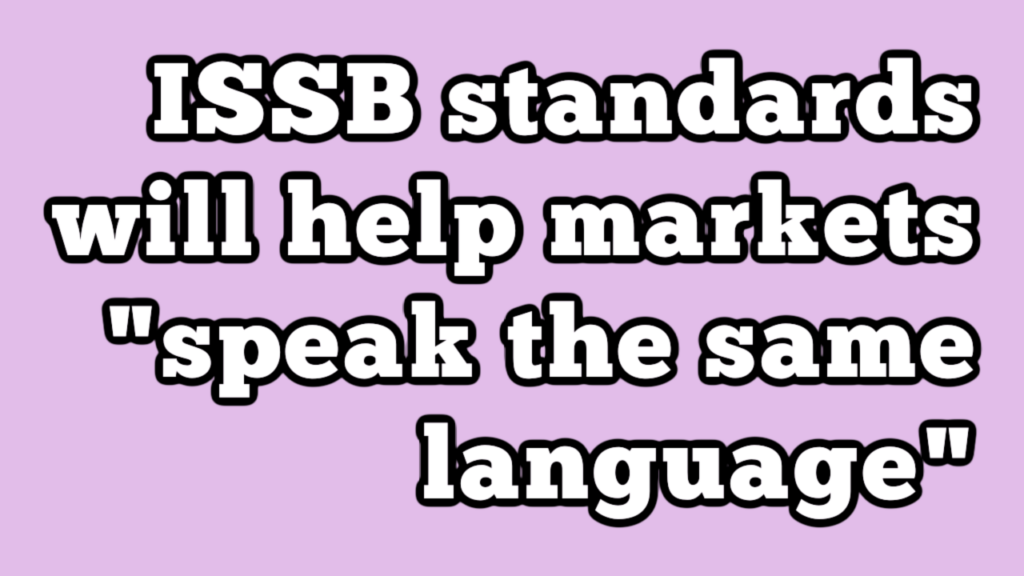ISSB standards will help markets “speak the same language”

Here’s an excerpt from this note from Persefoni’s Kristina Wyatt about the first ISSB Symposium that was recently held:
Another “sprinkle” the IFRS Foundation brings to sustainability standard-setting is its robust, rigorous, and transparent approach to governance, due process, and gathering stakeholder input. On the first panel, we heard about the feedback from more than 1400 commenters, and its work to engage with countless others through outreach efforts. Investors told the ISSB about the information they need to make decisions, and companies told the ISSB about some of the challenges. The ISSB discussed this feedback in open meetings, and landed on a balanced set of standards designed to enable and advance sustainability and climate-related disclosures in an inclusive way.
Companies largely agreed that a global baseline in a common language would benefit them, but spoke up about some of the challenges, especially for scenario analysis and disclosure of Scope 3 GHG emissions. The resounding message from investors was that they need this information to fully understand a company’s resilience, strategy, risks, and opportunities.
Verity Chegar, an ISSB Board Member, explained that the ISSB focused on finding ways to bridge this gap, recognizing that as global markets learn a new language, no one will be fluent on day one.
In the final standards, there will be a spectrum of approaches to scenario analysis that allow companies to start with qualitative approaches, explain their thinking, and, when ready, conduct a more quantitative analysis over time in a scalable way. For Scope 3, the ISSB standards will include a series of “safety rails” to support companies as they develop their own capacity and as market capacity evolves. This includes at least an additional year before Scope 3 disclosures are expected, and the ISSB will develop additional guidance for applying the GHG protocol to Scope 3, such as which categories to focus on. The standards are also clear that estimates and assumptions are not only accepted, but an expected part of the process – the standards require disclosures about the estimates and assumptions used.
At the Symposium, two globally-active investors explained how they use this information, even if a company is in the earlier stage of the spectrum. Tom Seidenstein, Chair of the International Accounting and Audit Standards Boards (IAASB) reminded the audience that global markets (and assurance providers) are inherently comfortable with estimates that are based on robust control processes and accompanied by disclosure.
In the words of an investor who also has to walk the walk as an issuer, Scope 3 represents the largest exposure to transition risk, and reporting on it is “a matter of when, not if.” Global markets will have to get comfortable with estimates and companies will need to establish reliable processes to support those calculations; this issuer will be doing that too.
